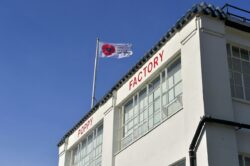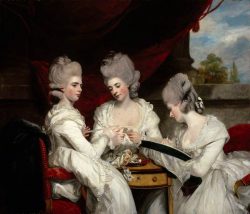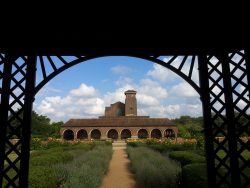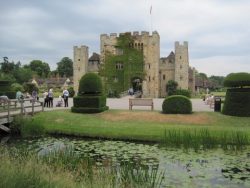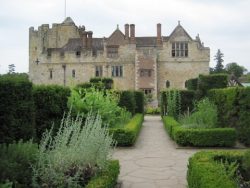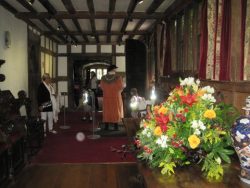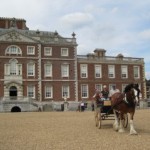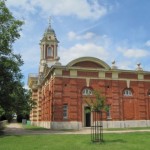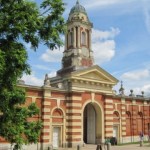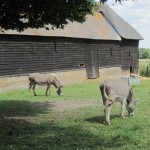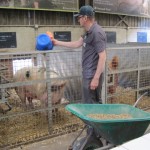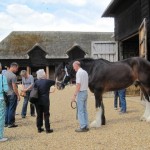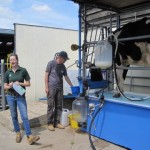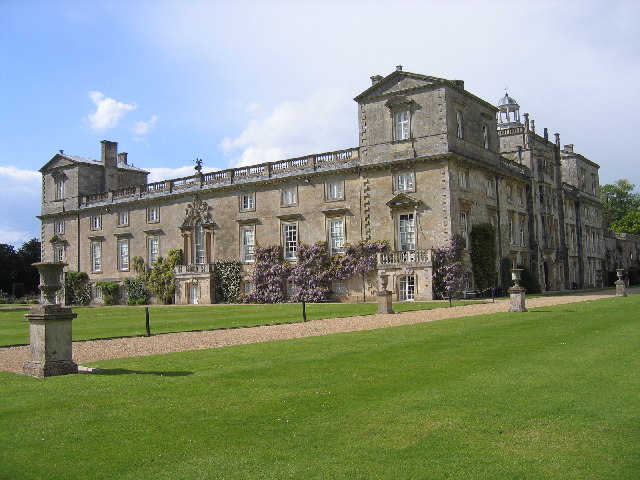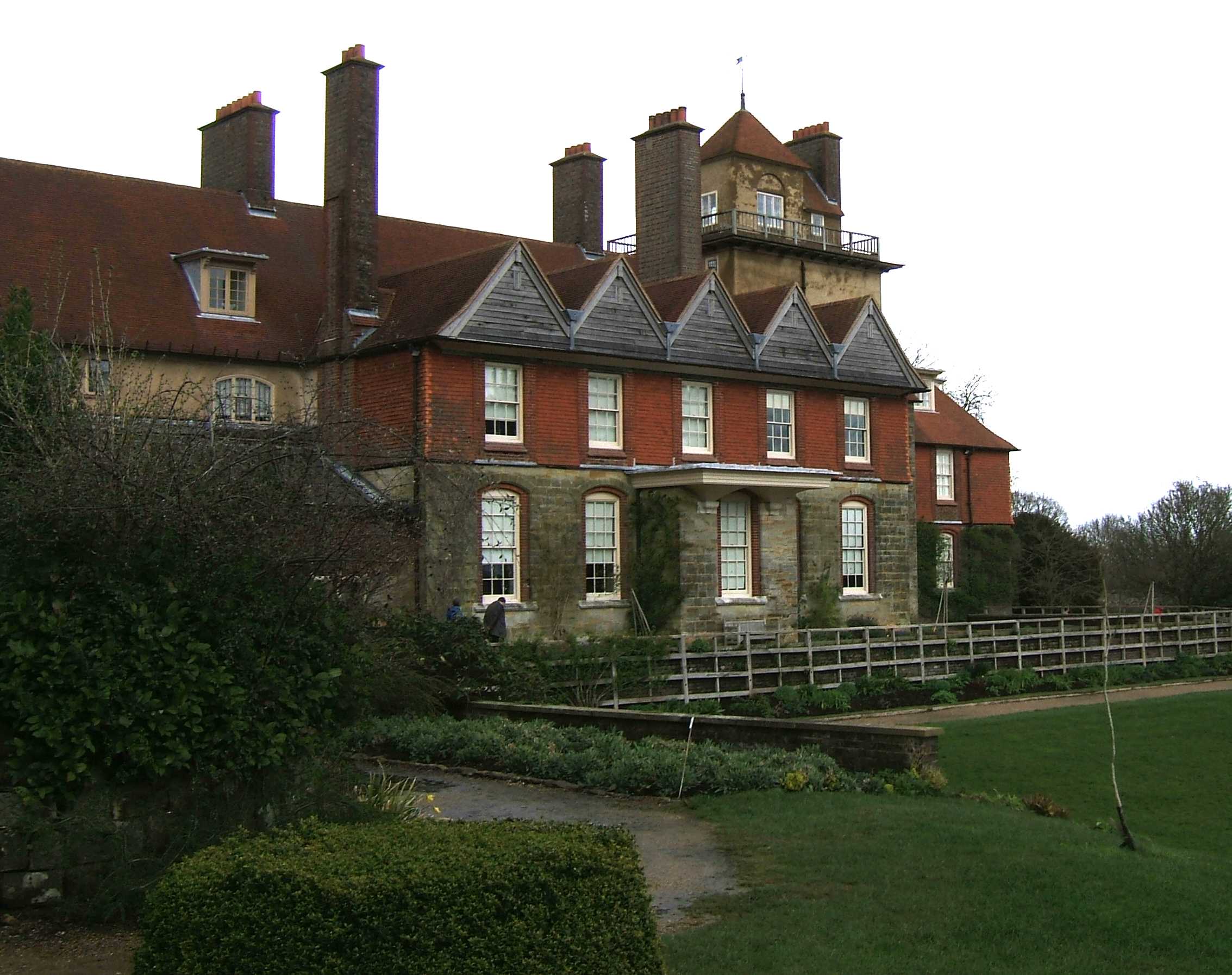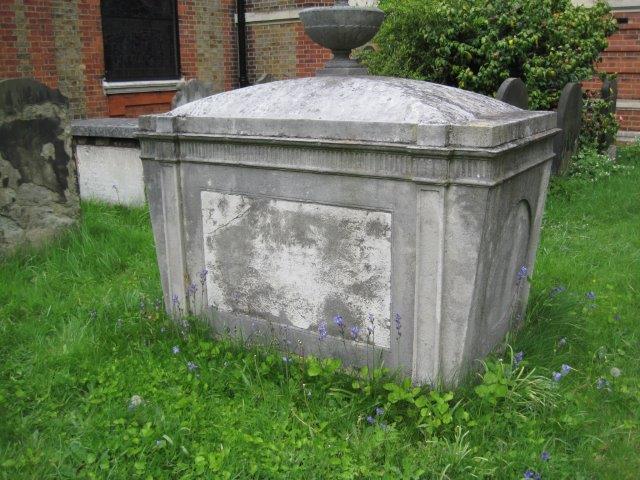Our Poppy Factory visit on Friday 13 May 2022
RLHS members and their guests visited The Poppy Factory, which is on Petersham Road in Richmond, on Friday 13 May 2022 from 3pm to 5pm. Established 100 years ago, the Poppy Factory still makes Remembrance products there, and it also supports veterans into all kinds of employment across England and Wales.
We learned the history of the Factory and were able to have a go at making your own remembrance poppy. We also learned how veterans still make Royal and regimental wreaths by hand today.
Established in the aftermath of the First World War, and an integral part of Richmond since the 1920s, The Poppy Factory developed into a community of wounded and injured veterans and their families. Today, The Poppy Factory is a national charity that still makes Remembrance products there, and it also supports veterans into all kinds of employment across England and Wales.
As part of our visit we enjoyed a delicious Factory Tea-break served by veteran baristas, with freshly baked cakes served by in-house artisan bakers.
On 24 June 2019 we visited a fascinating Tudor mansion surrounded by a water-filled moat
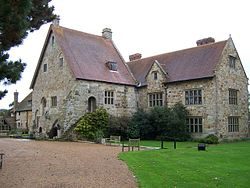 Our 2019 coach trip was to Michelham Priory in East Sussex, a fascinating Tudor mansion surrounded by England’s longest medieval water-filled moat. Set in seven acres of beautiful grounds (including kitchen, physic and herb gardens), its history covers some 800 years from its foundation by Augustinian canons, through the destruction caused by the dissolution of the monasteries, to its later life as a private country house and use as a base for Canadian troops in World War II preparing for the Dieppe raid.
Our 2019 coach trip was to Michelham Priory in East Sussex, a fascinating Tudor mansion surrounded by England’s longest medieval water-filled moat. Set in seven acres of beautiful grounds (including kitchen, physic and herb gardens), its history covers some 800 years from its foundation by Augustinian canons, through the destruction caused by the dissolution of the monasteries, to its later life as a private country house and use as a base for Canadian troops in World War II preparing for the Dieppe raid.
As well as enjoying a guided tour of the house, we were able to explore outside features including the medieval watermill, historic forge, replica Bronze Age roundhouse, rope museum and magnificent Great Barn.
Lost Treasures of Strawberry Hill: a private guided tour on 22 October 2018
For the first time in over 170 years, masterpieces from a once famous collection at Strawberry Hill House were temporarily reunited and displayed in their original positions. In 1842, after Horace Walpole’s death, his collection was dispersed worldwide. From October 2018 to February 2019, many returned home, including Joshua Reynolds’ painting of Walpole’s nieces which was re-hung in the Great Parlour.
The Society organised a private guided tour of this exhibition on Monday 22 October 2018.
July 2017: visit to Mortlake Crematorium
On Saturday 8 July 2017, members of the Society visited Mortlake Crematorium in Kew. Opened in 1939, this was the first jointly run municipal crematorium and today serves Richmond upon Thames, Hammersmith & Fulham, Hounslow and Ealing.
We met in the crematorium’s chapel to hear from Brian Parsons the story of this interesting Grade II building which has been called “a rare example” of Art Deco design in the borough of Richmond and “a building of exceptional quality 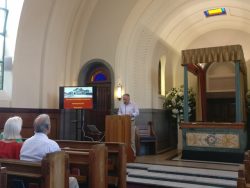 and character”. Colin Hines describes it as “probably the most undiscovered deco treasure in London”.
and character”. Colin Hines describes it as “probably the most undiscovered deco treasure in London”.
Brian Parsons’ talk was followed by tea and cakes arranged by Natasha Bradshaw, the crematorium’s Superintendent, who also gave us a guided tour of the crematory.
Robert Smith took the photographs
June 2017: coach trip to Hever Castle, Kent
Our summer coach outing, on Tuesday 27 June 2017, was to Hever Castle – rated 4 stars by Simon Jenkins. Dating back to 1270, Hever Castle was the childhood home of Anne Boleyn and has on display two beautiful illuminated prayer books which belonged to her.
Judith Church took the photographs during the visit.
2015: Coach trip to Wimpole Estate, Cambridgeshire
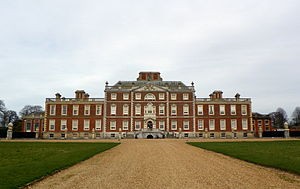 John Foley reports on the visit. Judith Church took the photographs.
John Foley reports on the visit. Judith Church took the photographs.
It’s selected as one of the ‘Glories of secret Britain, 20 historic houses you must visit’ in a very recent popular national newspaper summer colour spread. And if you were one of the 40 enthusiastic day trippers who boarded the Society’s hired coach outside Richmond Theatre on a beautiful summer morning, you’ll no doubt now agree; if you didn’t know about it before, the National Trust’s Wimpole Hall really is a must to visit.
And for once the publicity blurb does not mislead. The magnificent main building, in classical style, is the work of a combination of great architects and artists. Originally built in the 1640s for Sir Thomas Chicheley (Pepys knew him and wrote that he was one of the best tennis players in England; Charles II is supposed to have played him), the property passed first to the Harley family, then to the Earl of Hardwicke, Lord Chancellor in the 1740s, whose building programme reshaped the house into today’s form. James Gibbs added touches of baroque in the library and chapel, whilst James Thornhill, the premier 18th century fresco painter (and father-in-law of Hogarth whose house at Chiswick is just across the Thames – there’s a local connection!) decorated the chapel. The Yellow Drawing Room created by Sir John Soane (1793) is a highlight, and, talking of lights, has a unique very early gasolier (1816) suspended below Soane’s ceiling lantern dome. Not to be missed either is the gloriously elegant Book Room, a delightfully bright and airy reading room designed originally by Gibbs (1730) and later expanded by Soane. There are countless other gems, drawing rooms, galleries, the lavish Lord Chancellor’s Room . . . far too many to take in at one visit. The National Trust guides who staff the rooms are top quality, well-informed, enthusiastic, yet not intrusive; in essence, again to quote the newspaper blurb, it’s an ‘education in British classicism’.
Outside: note the magnificent park from the front facade stretching away to the south, in which Capability Brown had a big hand, which so sadly has still to recover from the loss from Dutch elm disease of its former mile-long double avenue of slender elegant elms; then go the model farm, again built by Soane in the 1790s, now restored and stocked with working shire horses, sheep, cattle, pigs – a particular plus if you take children, who can watch the animals at close quarters; don’t forget the cafe and refreshment areas, tastefully situated in restored out-buildings; and to say nothing of the landscaped gardens (Gothic Tower, ruin, Chinese bridge . . .)
After a long period of decline the house was acquired in the 1930s by Captain and Mrs Bambridge – none other than the daughter of Rudyard Kipling. In David Souden’s excellent guide he says that the great man visited the house shortly before his death and is believed to have warned his daughter, ‘Bird, I hope you have not bitten off more than you can chew!’. As his heiress Elsie Bambridge used her inheritance to start restoration and restocking of the house and estate before bequeathing it to the National Trust in 1976. And on 24 June the members and friends on our coach trip could inspect the happy fruits of her labours, and of the National Trust after her.
2014: Coach trip to Wilton House, a Palladian palace
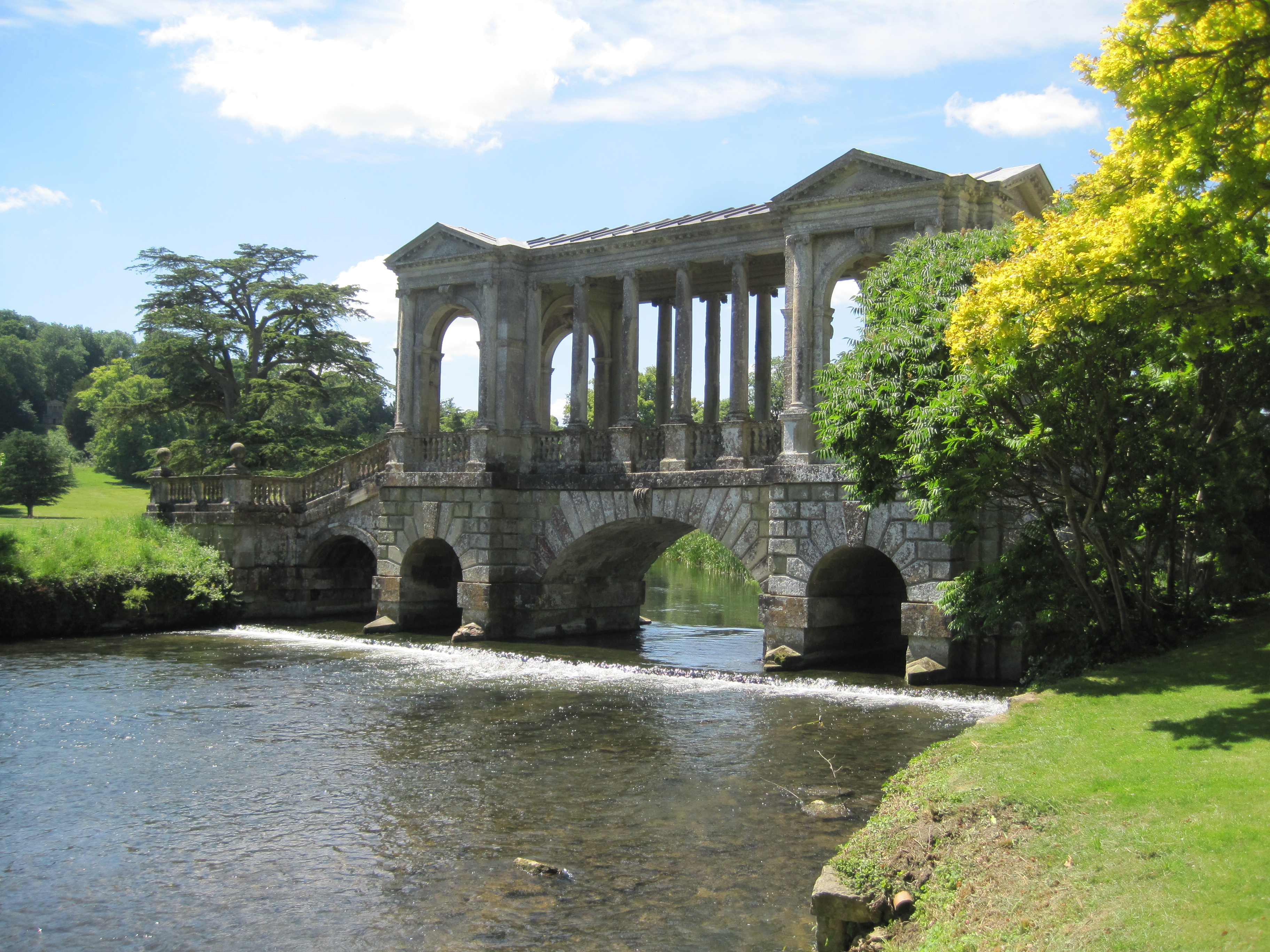 Forty members of the Richmond Local History Society went on a coach trip on 10 July 2014 to Wilton House, the home of the Earl of Pembroke, near Salisbury.
Forty members of the Richmond Local History Society went on a coach trip on 10 July 2014 to Wilton House, the home of the Earl of Pembroke, near Salisbury.
Wilton House (which we last visited 20 years ago) is one of the Great Houses of England – a Palladian palace with Inigo Jones and Wyatt interiors. The family home of the Earls of Pembroke since 1543, it continues to be lived in, by the present young Earl and his family.
The outstanding art collection includes works by Brueghel, Van Dyke, Lely, Reynolds and Rubens and there is exquisite furniture by such as Kent and Chippendale. The lovely Gothic cloisters were added by James Wyatt. The house, famed for its double cube room, is set beside the river Nadder (spanned by a Palladian bridge) in 22 acres of landscaped parkland; four beautiful new gardens were created by the late Lord Pembroke.
An added attraction was admission to Wilton House’s exhibition of photographs from the Cecil Beaton Studio Archive at Sotheby’s, curated by Jasper Conran, Cecil Beaton at Wilton.
2013: Coach trip to Standen,
a showcase of the Arts and Crafts Movement
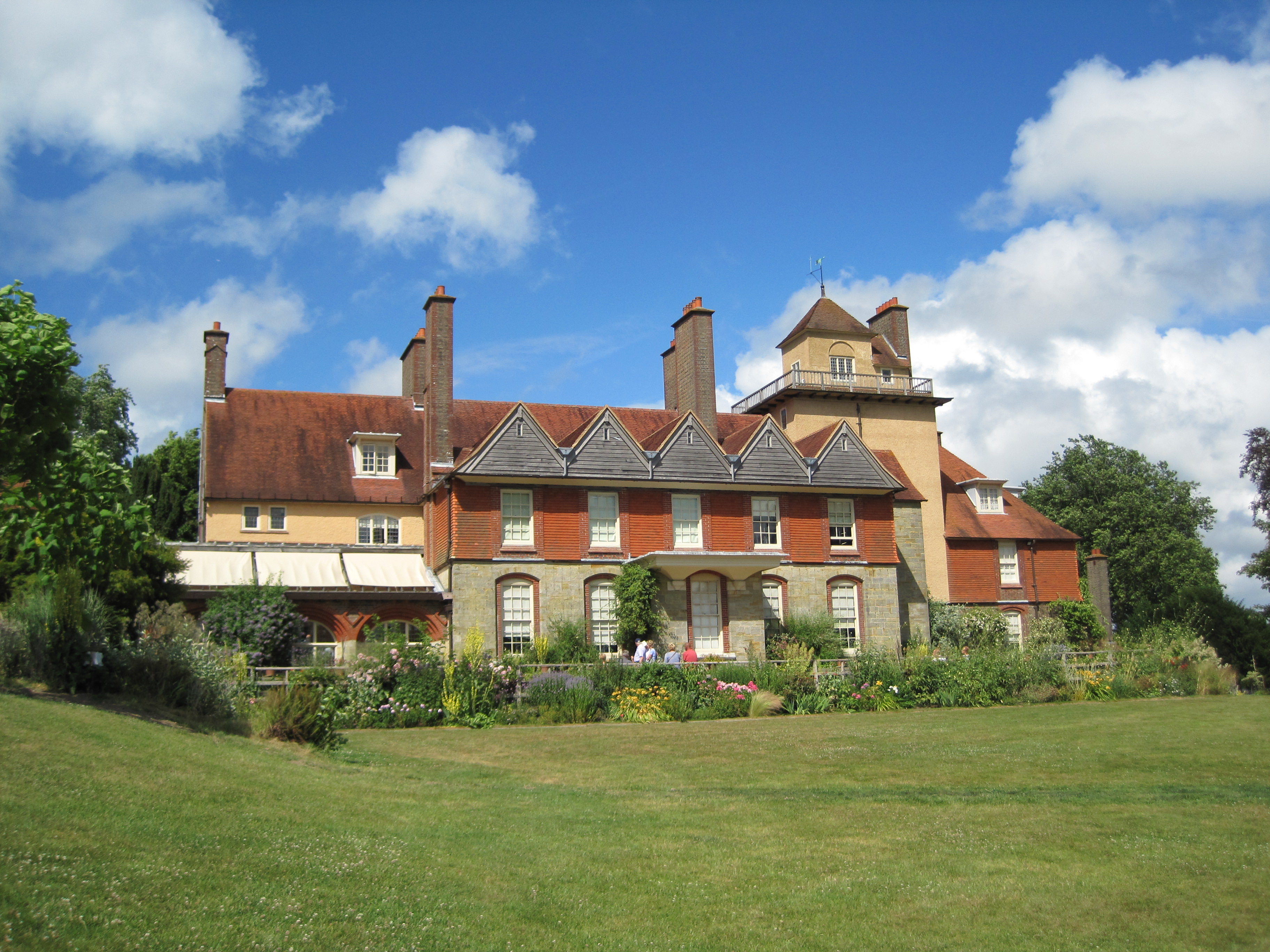 The Society organised a coach trip to Standen in West Sussex on Thursday 25 July 2013. Built in the 1890s for wealthy London solicitor James Beale and his large family, Standen is the best surviving example of the architecture of Philip Webb, friend of William Morris. A showpiece of the Arts and Crafts Movement, it is decorated throughout with Morris carpets, fabrics and wallpapers, complemented by contemporary paintings, embroidery and furniture.
The Society organised a coach trip to Standen in West Sussex on Thursday 25 July 2013. Built in the 1890s for wealthy London solicitor James Beale and his large family, Standen is the best surviving example of the architecture of Philip Webb, friend of William Morris. A showpiece of the Arts and Crafts Movement, it is decorated throughout with Morris carpets, fabrics and wallpapers, complemented by contemporary paintings, embroidery and furniture.
 We were given timed tickets to go round the house free-flow so we could take our time. Of special interest on our visit was an exhibition on May Morris, the daughter of William Morris, accompanied by a textile trail throughout the house.
We were given timed tickets to go round the house free-flow so we could take our time. Of special interest on our visit was an exhibition on May Morris, the daughter of William Morris, accompanied by a textile trail throughout the house.
Interestingly, Standen was left to the National Trust in 1972 but with an inadequate endowment. Arthur Grogan offered to sell his own house in Richmond and make up the endowment by donating the proceeds to the Trust and to furnish Standen with his own collection of pictures. He and his wife Helen lived at Standen for eight years, carrying out restoration work and collecting paintings and furniture for the house. So Standen has an unexpected Richmond connection!
Visiting Kew Green
Members of the Society enjoyed a visit to Kew Green on Wednesday 15 May 2013 conducted by Jane Short, who is a member of the Society and is also a Heritage Guide. On the tour, which was followed by refreshments, Jane described the history of many of the houses on the Green, some of them associated with the Royal Household and with the several artists who lived or stayed in Kew.
Unexpectedly, the group was also able to step inside St Anne’s Church, which is currently being renovated. In the churchyard there is a substantial family tomb – pictured here – for William Aiton, the first botanic gardener at Princess Augusta’s gardens in Kew, and his son William Townsend Aiton, a landscape gardener involved in the development of the gardens at Windsor and Buckingham Palace. You can read more about them in the Society’s book The Aitons: Gardeners to Their Majesties.
The Society organises a programme of visits to local houses and buildings of historic interest, some of them not normally open to the public, as well as guided walks around local areas of interest: just some of the many benefits of being a Richmond Local History Society member.
Visiting the German School in Petersham
Richmond Local History Society members enjoyed a visit on Tuesday 5 March 2013 to the German School (Deutsche Schule) in Petersham and a tour by its headmistress Mrs Marie-Luise Balkenhol.
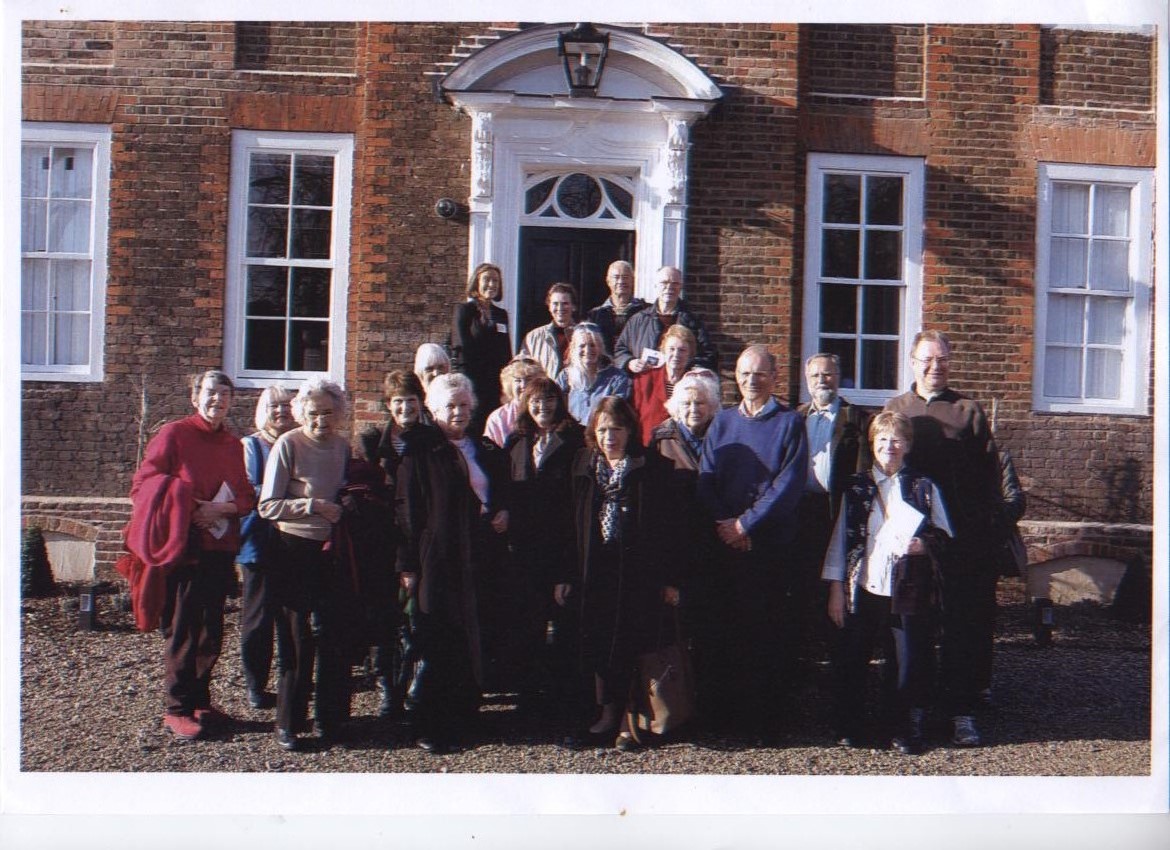 The group (19 from the Richmond Local History Society and two Richmond in Europe members) at the German School on the sunniest day of the year.
The group (19 from the Richmond Local History Society and two Richmond in Europe members) at the German School on the sunniest day of the year.
The school, near the Russell School and the road to Ham Polo Club, is based at Douglas House, which was built between 1712 and 1717. In 1969, the house and grounds were sold to the Federal Republic of Germany to accommodate the school, which was founded in 1971.
Expanded into modern buildings in 1981, it now takes boys and girls from ages 3 to 19.
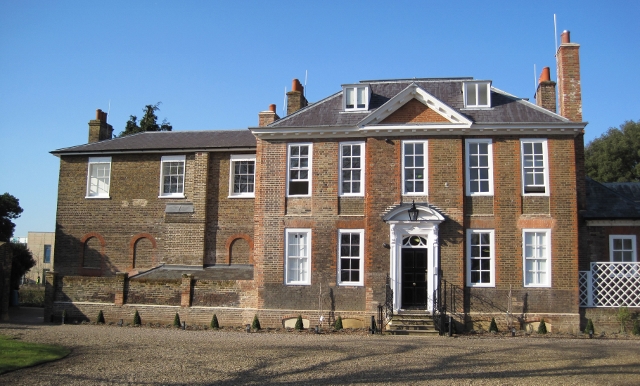 The Berlin Wall came down in November 1989, and a tall rectangular fragment from the Bernauer Strasse is preserved in the school grounds.
The Berlin Wall came down in November 1989, and a tall rectangular fragment from the Bernauer Strasse is preserved in the school grounds.
